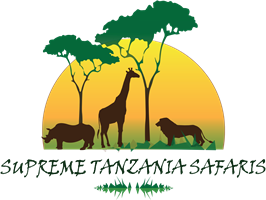
Serengeti National Park
The Serengeti National Park is a large national park (13,000 km²) in Tanzania, Africa. It is famous for the annual migrations of thousands of wildebeest.
The five great animals of the park, so called by the hunters for years, are the lion, the leopard, the elephant, the rhinoceros and the brown buffalo. The park is also home to hyenas, cheetahs, zebras, raptors and many other species.
Near the park is the Olduvai Gorge, where many fossils and hominid artifacts have been found. The park is bordering with the Ngorongoro Conservation Zone, which is part of the great Serengeti ecosystem
.The Masái people already raised their animals in the "endless plains" of the region 200 years before the arrival of the first European explorers. The name Serengeti is an approximation of the pronunciation of the word used by the Masái to describe the region
.German geographer and explorer Oscar Baumann arrived in the region in 1892.1 Baumann killed three rhinos during his stay in the Ngorongoro crater.
The first Briton to visit the Serengeti, Stewart Edward White, began his explorations in the north of the Serengeti in 1913
.He returned to the region during the 1920s, and camped near Seronera for three months
.At this time, he and his team members killed 50 lions. 2 Due to intensive hunting, the number of lions was reduced, and the British decided to create a partial hunting reserve of 800 acres (3.2 km²) in the region in 1921 and establish a more complete one in 1929.
These reserves were the basis for the creation of the Serengeti National Park, 34 that was established in 1951
.The Serengeti became famous after the work of Bernhard Grzimek and his son Michael in the 1950s. Together they produced the book and movie Serengeti Shall Not Die, being acclaimed as one of the first and most important documentaries about the conservation of natural regions.
As part of the creation of the park, and with a view to preserving wildlife, the Maasai who lived in the region were transferred to the Ngorongoro highlands. There are still considerable controversies about this transfer, with allegations that there was coercion by the colonial authorities. Serengeti is the oldest national park in Tanzania and is the main tourist attraction in the country, being currently part of the “Northern Safari” circuit, which covers Lake Manyara, and the national parks of Tarangire and Arusha, well the conservation area from Ngorongoro. The Serengeti National Park was declared a World Heritage Site by Unesco in 1981

